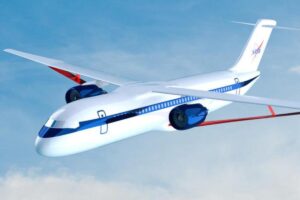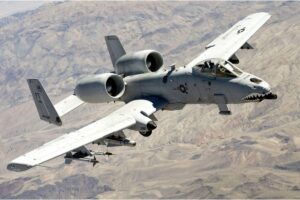SYNCHRO to 429 Converters: Enabling Data Flow in Avionics
Table of Contents
-
Executive Summary
-
Introduction to Avionics Communication Protocols
-
Overview of SYNCHRO Systems
-
Overview of ARINC 429 Protocol
-
The Role of Protocol Converters in Avionics
-
SYNCHRO to 429 Conversion: Technical Overview
-
Signal Conditioning and Data Encoding
-
Conversion Accuracy and Synchronization
-
Application Areas in Aerospace Systems
-
Use Case: Flight Control System Integration
-
Use Case: Navigation System Interfacing
-
Use Case: Retrofitting Legacy Equipment
-
Challenges in SYNCHRO to 429 Conversion
-
Environmental and Electromagnetic Considerations
-
Compliance with Industry Standards
-
Hardware Design Considerations
-
Firmware and Software Aspects
-
Testing and Validation Procedures
-
Future Trends and Technological Advancements
-
Vendor Selection Criteria
-
Case Study: Military Transport Aircraft Upgrade
-
Cost-Benefit Analysis of SYNCHRO to 429 Conversion
-
Conclusion
-
References
1. Executive Summary
Modern avionics systems are composed of diverse subsystems that rely on different data communication standards. Among these, SYNCHRO and ARINC 429 remain prominent. SYNCHRO systems excel in analog data transmission such as angular position sensing, while ARINC 429 provides a unidirectional, digital data link used extensively in commercial aviation. As aircraft evolve and adopt integrated modular avionics (IMA), the need to bridge these protocols becomes critical. This white paper examines the role of SYNCHRO to ARINC 429 converters in facilitating seamless data flow, maintaining signal integrity, and ensuring functional compatibility across avionics systems.
2. Introduction to Avionics Communication Protocols
Avionics systems are reliant on robust, deterministic, and fail-safe communication protocols. Over decades, various standards have emerged to meet mission-critical demands. These protocols can be broadly categorized into analog (e.g., SYNCHRO, resolver) and digital (e.g., ARINC 429, MIL-STD-1553) formats. As digitalization grows, the coexistence and integration of legacy analog systems and modern digital platforms pose engineering challenges. The development of protocol converters like SYNCHRO to 429 units addresses these gaps, enabling compatibility while reducing system overhaul costs.
3. Overview of SYNCHRO Systems
SYNCHROs are electromagnetic devices that transmit angular position information using sine and cosine waveforms. Typically consisting of a rotor and stator, SYNCHROs function similarly to transformers, generating variable output voltages proportional to the rotor’s angular position. Used widely in flight control systems, navigation, and instrumentation, SYNCHROs offer high reliability and accuracy, especially in harsh operating environments. However, their analog nature complicates direct integration with modern digital systems.
4. Overview of ARINC 429 Protocol
ARINC 429 is a point-to-point, unidirectional data bus developed for commercial aviation. Using a two-wire twisted pair cable, it transmits 32-bit words at either 12.5 or 100 kbps. Each word contains a label, source/destination identifiers, data, and a parity bit for error detection. Its simplicity, fault tolerance, and standardization make ARINC 429 a backbone protocol in aircraft systems ranging from engine monitoring to flight management. However, it cannot natively interpret analog SYNCHRO signals.
5. The Role of Protocol Converters in Avionics
Protocol converters are critical for integrating heterogeneous avionics components. By translating data between incompatible standards, they ensure that legacy and new systems can interoperate without performance degradation or rewiring. A SYNCHRO to 429 converter digitizes analog angular information and encapsulates it into ARINC 429-compliant messages. This allows newer control units, displays, or flight computers to interpret signals from older analog sensors or actuators.
6. SYNCHRO to 429 Conversion: Technical Overview
At a high level, a SYNCHRO to ARINC 429 converter includes:
-
SYNCHRO signal input stage
-
Analog-to-digital conversion
-
Angle computation logic
-
ARINC 429 encoding logic
-
429 line driver and output
The converter samples the sine and cosine outputs of the SYNCHRO stator, computes the shaft angle using algorithms such as the arctangent function, and formats the data into a 32-bit ARINC 429 word. The message is then serialized and transmitted according to ARINC timing and parity constraints.
7. Signal Conditioning and Data Encoding
Before processing, raw SYNCHRO signals are conditioned via filters and amplifiers to ensure signal integrity. Noise suppression, voltage matching, and isolation protect downstream electronics. The data encoding logic assigns a label corresponding to the type of parameter (e.g., heading, azimuth), applies a Sign/Status Matrix (SSM), and calculates parity before placing the word onto the 429 bus.
8. Conversion Accuracy and Synchronization
Accuracy is paramount in avionics. The resolution of the ADC (often 12-16 bits) and the speed of signal sampling determine angular accuracy, typically in the range of ±0.1°. Moreover, synchronization between SYNCHRO signal phase and digital sampling must be maintained to prevent phase lag or jitter. Temperature compensation and calibration routines further ensure reliable conversion.
9. Application Areas in Aerospace Systems
SYNCHRO to 429 converters are essential in systems where analog sensors provide critical positioning data but need to interface with digital subsystems. Application areas include:
-
Autopilot and flight director systems
-
Navigation instruments (e.g., gyros, compass systems)
-
Engine control and monitoring systems
-
Air data computers
-
Weapon targeting systems in military aircraft
10. Use Case: Flight Control System Integration
Flight control surfaces such as rudders or elevators often rely on mechanical actuators controlled via analog input devices like synchros. By converting this data to ARINC 429, digital flight control computers can process precise positional feedback, allowing for fly-by-wire enhancements while maintaining legacy hardware.
11. Use Case: Navigation System Interfacing
Legacy heading or attitude reference systems using synchros can still provide reliable data. When integrated into modern cockpit displays or inertial navigation systems (INS), a converter ensures that the analog angular information is accurately translated and interpreted in digital format.
12. Use Case: Retrofitting Legacy Equipment
Many military and commercial aircraft in service use proven analog systems. Rather than undertaking full system replacements, SYNCHRO to 429 converters allow integration of these legacy components with upgraded digital avionics, extending service life and minimizing retrofit costs.
13. Challenges in SYNCHRO to 429 Conversion
Some of the technical and operational challenges include:
-
Ensuring noise immunity in electrically noisy aircraft environments
-
Maintaining accuracy across varying temperatures and altitudes
-
Power consumption limitations
-
Physical space constraints in avionics bays
-
Synchronization with time-critical systems
-
EMI/EMC certification for airborne platforms
14. Environmental and Electromagnetic Considerations
Converters must conform to DO-160 and MIL-STD-461 standards to endure environmental stresses such as vibration, humidity, altitude, and EMI. Proper shielding, grounding, and circuit design help maintain signal integrity and device reliability.
15. Compliance with Industry Standards
Key standards include:
-
DO-160G – Environmental conditions for airborne equipment
-
ARINC 429 – Specification 429 for digital data transfer
-
MIL-STD-461 – Electromagnetic interference control
-
DO-254 – Hardware development assurance
-
DO-178C – Software assurance
Certifiable systems require traceable design, thorough testing, and documentation.
16. Hardware Design Considerations
Typical hardware components include:
-
High-impedance input transformers for SYNCHRO signals
-
High-resolution ADCs
-
DSP or microcontroller units
-
EEPROM/flash for configuration
-
ARINC 429 line drivers
-
Conformal coating for environmental protection
Redundancy and fault detection features are often integrated for safety-critical functions.
17. Firmware and Software Aspects
Firmware handles:
-
Angle calculation
-
Signal validation and diagnostics
-
Configuration management (e.g., label selection)
-
Communication timing
-
Error handling routines
Advanced designs allow in-field reconfiguration through serial or Ethernet interfaces, reducing the need for physical access.
18. Testing and Validation Procedures
Typical procedures include:
-
Bench-level signal injection tests
-
Hardware-in-the-loop (HIL) simulations
-
Electromagnetic compatibility tests
-
Thermal cycling and vibration testing
-
Functional safety assessments
-
Latency and throughput analysis
Validation ensures the converter meets deterministic behavior under worst-case scenarios.
19. Future Trends and Technological Advancements
As avionics systems become more modular and software-defined, converter designs are evolving:
-
FPGA-based processing for higher throughput
-
Integration with IMA architectures
-
Cybersecurity hardening
-
Built-in self-test (BIST) functions
-
Miniaturization using SoC platforms
-
Support for multiple legacy input formats in one unit
AI-based diagnostics and health monitoring may also be integrated in future units.
20. Vendor Selection Criteria
Key factors when choosing a SYNCHRO to 429 converter vendor include:
-
Compliance with aerospace standards
-
Proven reliability and MTBF statistics
-
Field-proven deployments
-
Customization capabilities
-
Size, weight, and power (SWaP) optimization
-
Technical support and documentation
-
Integration with certification frameworks
21. Case Study: Military Transport Aircraft Upgrade
A military transport aircraft required integration of a new digital navigation computer with an older heading reference system. Rather than replacing the analog system, engineers deployed SYNCHRO to ARINC 429 converters. These units digitized the heading data and transmitted it over the 429 bus, seamlessly feeding into the new avionics without loss of fidelity. This approach saved millions in redesign costs, reduced installation time, and enabled phased modernization.
22. Cost-Benefit Analysis of SYNCHRO to 429 Conversion
Benefits:
-
Enables gradual upgrades
-
Reduces downtime
-
Lowers certification costs
-
Preserves investment in legacy equipment
-
Improves reliability by eliminating manual data translation
Costs:
-
Initial procurement and testing
-
Integration effort
-
Long-term maintenance and obsolescence planning
Despite upfront investment, the lifecycle benefits typically justify the conversion.
23. Conclusion
SYNCHRO to ARINC 429 converters represent a crucial technological bridge in the evolution of avionics systems. As aircraft platforms strive for greater integration and digitalization, these converters facilitate interoperability, maintain functional continuity, and reduce total cost of ownership. Whether in commercial airliners, rotary-wing platforms, or military jets, the deployment of reliable, standards-compliant converters ensures that proven analog technologies continue contributing to safe and efficient flight operations.
24. References
-
ARINC Specification 429-16
-
MIL-STD-461G
-
RTCA DO-160G, Environmental Conditions and Test Procedures
-
RTCA DO-254/DO-178C Certification Guidance
-
IEEE 1334-1996, Standard for Synchro and Resolver Converters
-
NASA Technical Reports on Avionics Interfacing
-
Industry white papers from Astronics, North Atlantic Industries, Data Device Corporation (DDC)





